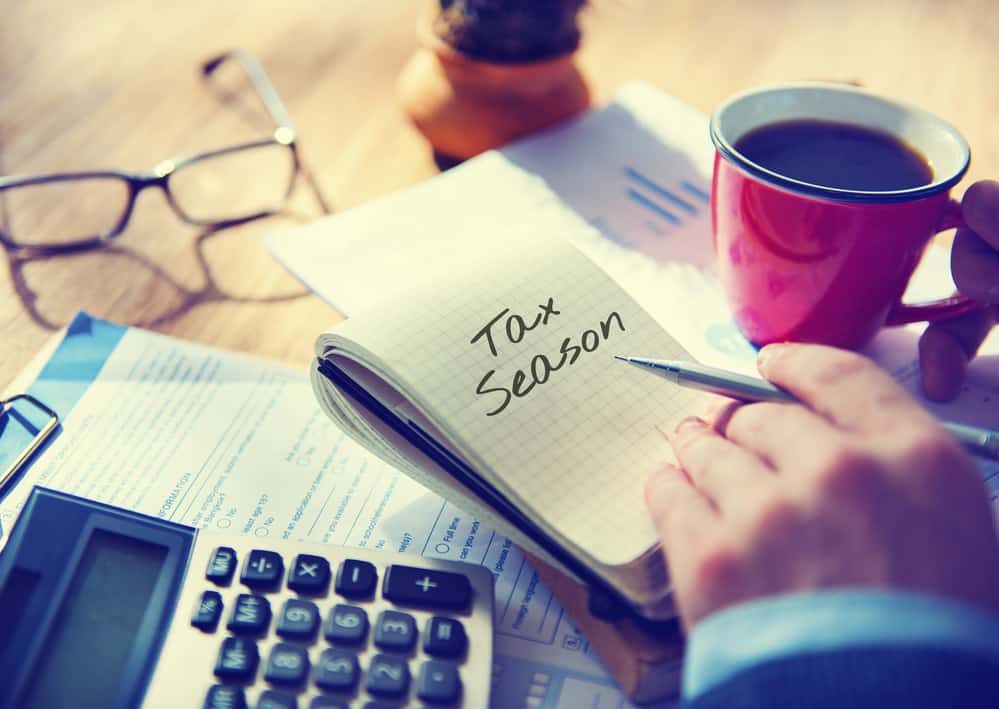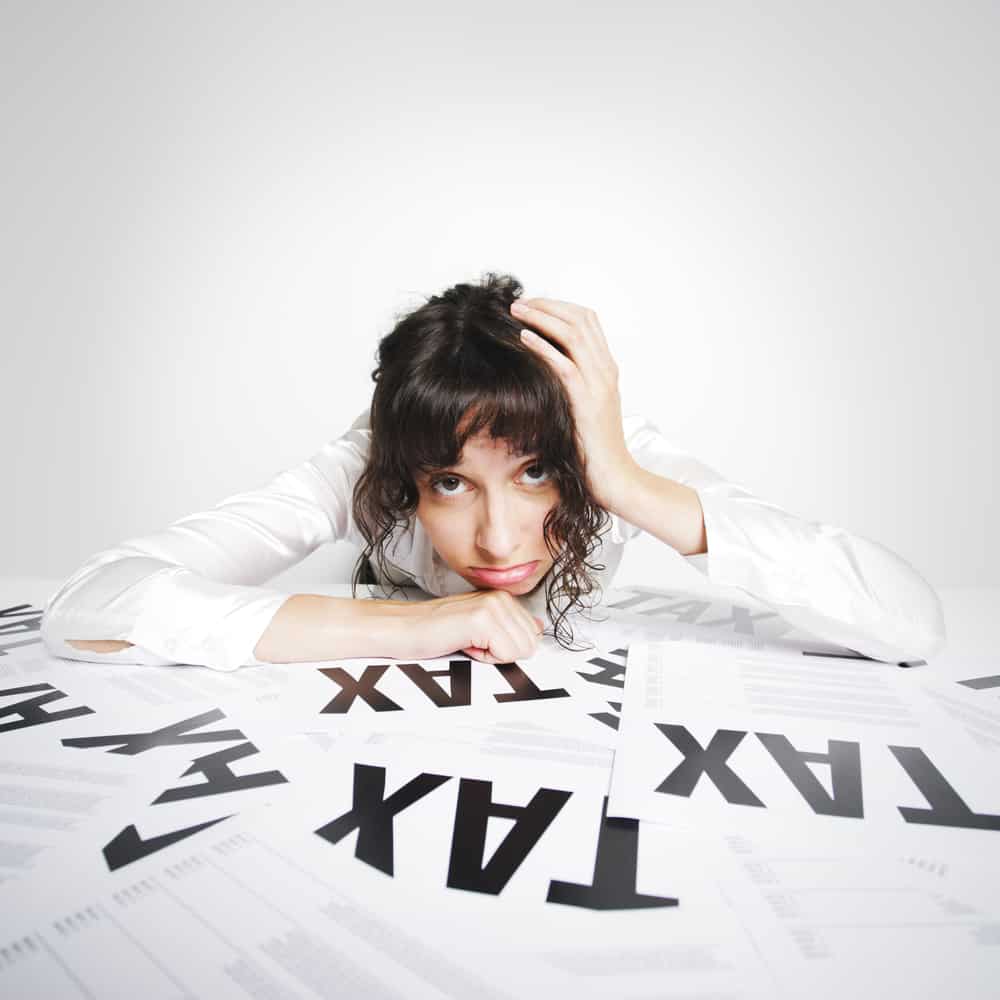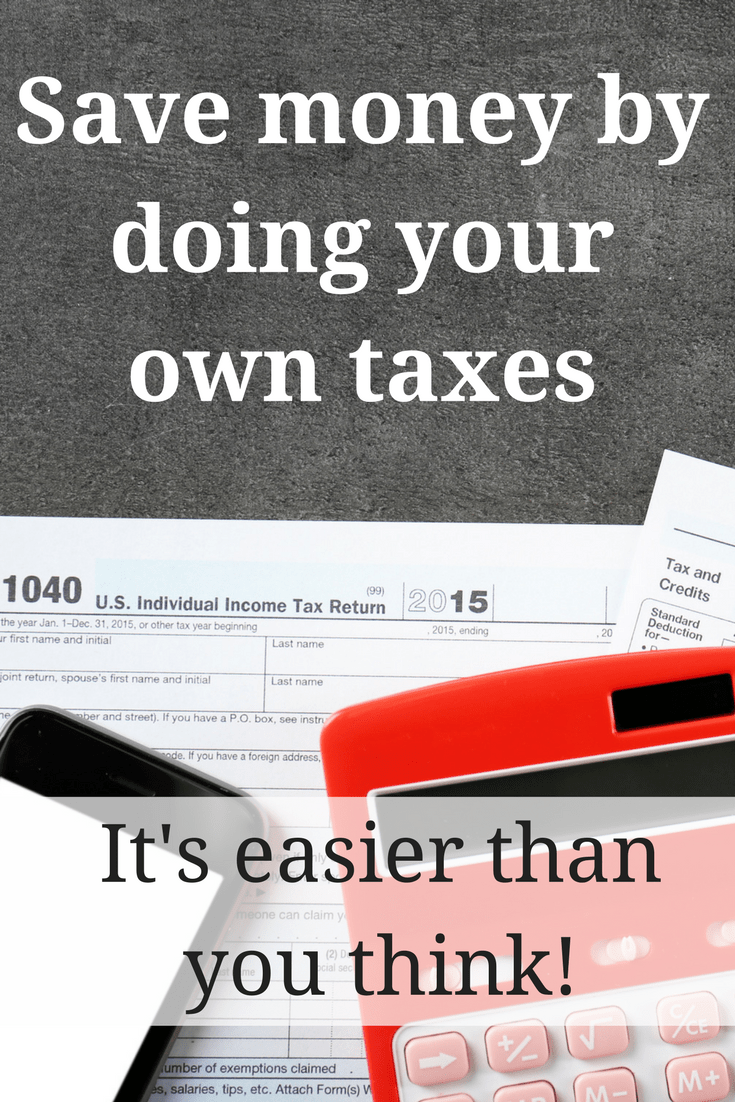I always used my family’s accountant to do my taxes. He wasn’t cheap, but I thought the expense was justified — until I found some serious errors in my tax return that, had I not caught them, would have cost me as much as I was paying my accountant. At that point, I realized that I could do my taxes myself and save the money I was paying an accountant.
After several years using H&R Block and TurboTax to file my taxes, I have learned many valuable lessons about doing your taxes on your own. Read on to learn about DIY cheap tax preparation and whether that makes sense for you. It’s actually easier than you think.

Photo: Deposit Photos
You don’t need to be a financial expert to do your own taxes
The first aspect to consider when doing your own taxes is your financial knowledge. If you feel completely clueless when dealing with money, you may feel better going with a tax preparer even if you are good enough with a computer to do it yourself.
Tens of millions of people used tax-prep software last year, and very few of them are “financial experts.” If you have an average knowledge of personal finance, you should be safe doing your own taxes. If you use a tax program like TurboTax, H&R Block, Tax Slayer or Cash App Taxes, the prompts and questions the software asks you along the way help the program take care of the difficult calculations. All you need to know is how to answer those questions accurately and which boxes to check off for more information.
Basic computer skills are a must
While you can do your taxes with a pen, scratch paper and a calculator, using a computer-based program is the best option to get the most accurate return and take advantage of every possible deduction and credit. Simple returns can be completed using your phone, but if you have anything more than a W-2 and one or two more tax forms to report, you are best off using a laptop or desktop computer.
You should feel comfortable using a keyboard and mouse and opening and closing files. If you know enough to save a picture from your phone or camera to your computer and attach it to an email, you have the skills needed for DIY tax preparation.
The simpler your finances, the easier to do them yourself
Most people have a W-2 from their employer, get a few 1099s from bank interest or investments and might have a 1098 or other forms for home interest, student loan interest, and retirement account withdrawals or contributions. If that sounds like you, doing your taxes yourself on the computer is fairly easy and straightforward.

Photo: Deposit Photos
As taxes become more complex, however, things are not so cut-and-dried. If you earn money through a side hustle, as a consultant or own your own business, you may consider hiring an accountant to ensure you don’t do anything wrong. However, I own a solo member LLC business myself and did my own taxes and created the schedule C just fine three years in a row without bringing on a CPA. For my S-Corp, I did hire a professional accountant.
The biggest secret to a stress-free DIY tax filing is organization. Before you even start with the tax prep software, gather and organize all of your tax forms and relevant receipts in once place. That way, when you are doing your taxes, you can quickly access everything you need and know you didn’t forget or miss anything.
Which tax program is best?
If you decide to give doing your own taxes a try, you have a few different options of tax preparation programs. You can choose from online programs, programs you download to your computer and even options to complete your taxes with your smartphone. In general, online is the best option because your data lives in the cloud. You can access it anytime from any computer with internet access as long as you have your login information handy.
With so many options, it can be confusing to know which one is best for your needs. Here is a rundown of pros and cons from some of the most popular options available today. (Note: Prices were accurate as of the date of publication but may change without notice.)
TurboTax. TurboTax is the biggest DIY tax option on the market. For your personal taxes, TurboTax can handle just about anything you throw at it. If you are comfortable with the idea of doing your own taxes and feel confident on the computer, TurboTax is arguably the best option, but it is not the cheapest. The basic version is free for simple federal and state returns. The cheapest option: The least expensive paid TurboTax version, in which you store the information on your computer instead of in the cloud, costs $40 for federal returns and $39 for one state return. The most expensive option: The most advanced version for self-employed individuals costs $129 for a federal return with live support from tax experts ($79 for state returns). On a personal note, I used TurboTax for my family’s personal taxes this year and had an overall easy and positive experience.
H&R Block. The second most popular DIY tax option is H&R Block. The biggest difference comes in how you use the product and the support you receive. H&R Block was created by a company with thousands of retail locations across the U.S. If you finish your taxes and need extra support, H&R Block is available as a resource with physical offices and human tax experts who can offer whatever help you need for an extra fee. Like all the companies listed here, H&R Block offers a free online edition for simple returns. The cheapest option: The online deluxe version (the cheapest option other than the free version) costs $55 plus $49 per state return. The most expensive version: If you are self-employed, there is a federal version for $115 plus $49 per state filed. Unlimited online help from an expert is included in all except the cheapest version.
Tax Slayer. Tax Slayer has several low-cost options (in addition to its free version) and no very pricey ones. The cheapest option: The Classic version (for all tax situations) costs $37.95 federal, $44.95 per state. The most expensive version: The Self-Employed version (for personal and business income and expenses) costs $67.95 for federal returns and $44.95 per state stax return. It includes expert assistance.
Cash App Taxes (formerly CreditKarma Tax). Credit Karma made its name as a great option to get your credit score and credit report for free. Its free tax prep program is called Cash App Taxes. The reviews are mostly positive and the program is available for most people in most states. Aside from a pencil and paper, you won’t find a better deal for tax preparation. It doesn’t get cheaper than free!
Doing your taxes with any of these online programs is not that difficult depending on the complexity of your taxes. They all do a great job of walking you through what you need to do to complete your taxes. The prompts along the way tell you where to find the information to enter. If you have a form that you can’t figure out where to enter, just type it into the help section and you will get a quick answer.

Photo: Deposit Photos
Try before you buy and commit
One of the best aspects of most tax programs is that you can try them out for free. The biggest online tax prep services all let you complete and view your tax return without paying and only charge when you file. If you only have a W-2 and nothing else, you may even be able to use a program like this for free.
With no commitment, you can try doing your taxes yourself online. If you have trouble or don’t like the result, the only cost was a little bit of your time. Until you click the button to pay and then file, you can always change your mind without spending a penny.
If you know basic math, can read and know how to use a computer, there are few reasons you would need to hire an accountant to do your taxes. Thanks to the ease and low cost of online tax prep software, you can safely try DIY taxes without worry. You have nothing to lose but could save a ton of money on tax prep fees. That’s a big financial win that could keep saving you money for many years to come.


In the past I’ve always seen extra fees for these programs, for filing electronically. I wish the article would have covered that also.
Hi Jack, there are no additional electronic filing fees beyond the costs quoted in the article. Filing electronically is included.